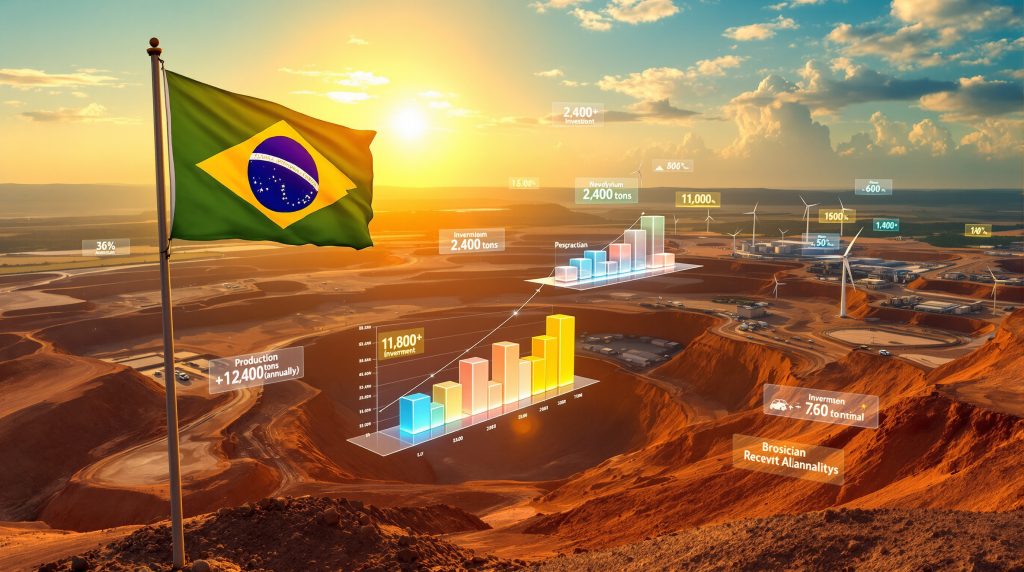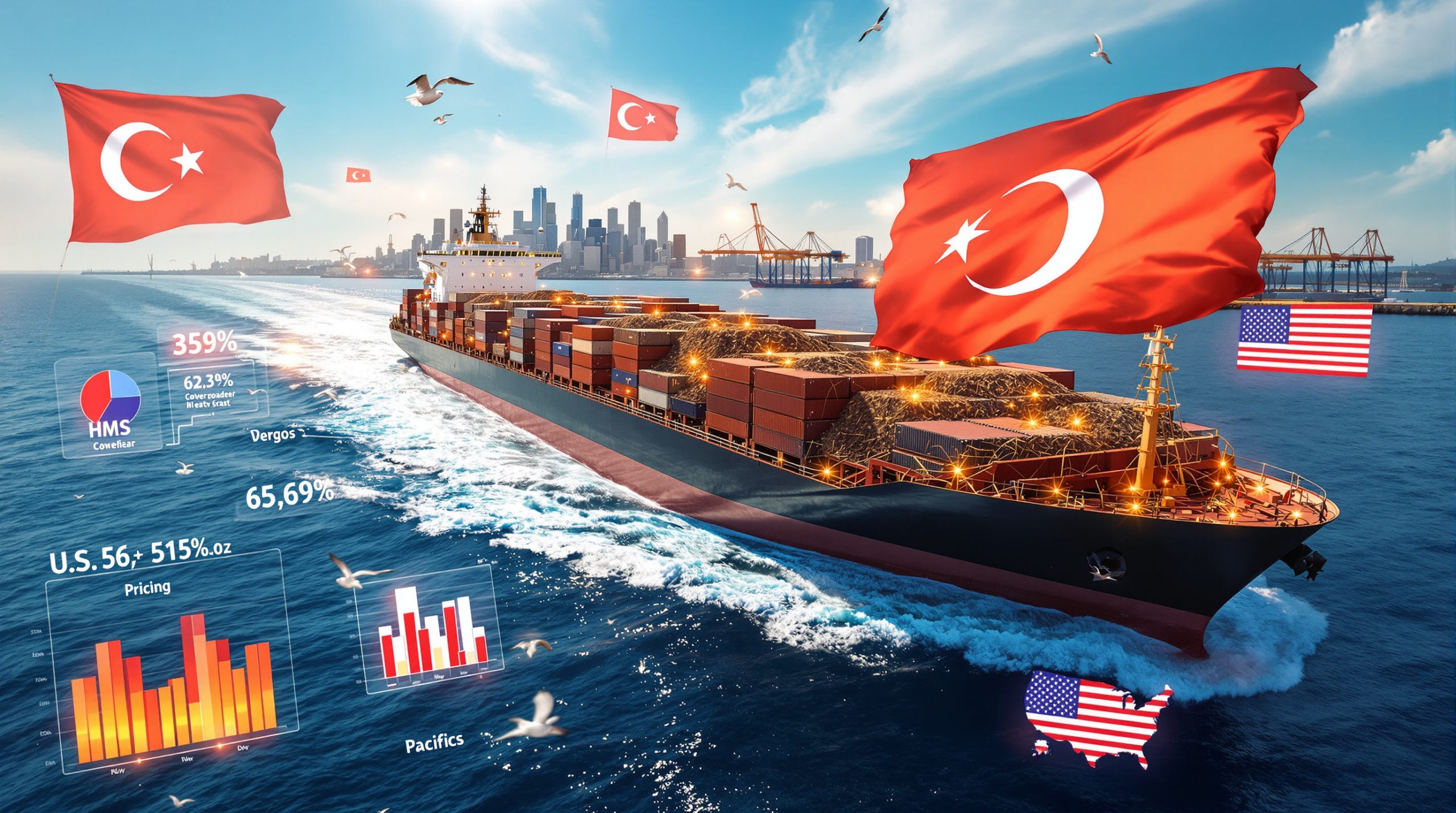The United States International Development Finance Corporation's commitment of $465 million to the US backs Serra Verde's Brazilian rare earth project represents a watershed moment in critical minerals security. This unprecedented Western investment in South American rare earth production directly challenges China's market dominance while establishing Brazil as a key player in global strategic mineral security.
Western nations currently face severe supply vulnerabilities in the rare earth sector. Chinese operations control approximately 60% of global rare earth mining capacity and maintain an overwhelming 85% control of processing operations worldwide. This concentration creates significant strategic risks for Western military applications, clean energy infrastructure, and advanced manufacturing sectors that depend on these critical materials.
Brazil emerges as the most viable alternative, possessing roughly 23% of the world's known rare earth reserves. The Serra Verde partnership leverages these substantial deposits while addressing Western concerns about supply chain resilience and geopolitical dependencies.
Military and Clean Energy Applications Drive Investment Priority
The targeted minerals from Serra Verde's operations serve essential functions across multiple strategic sectors. Neodymium and praseodymium form the backbone of high-strength permanent magnets critical for electric vehicle motors and wind turbine generators. These same elements power advanced radar systems and precision guidance technologies essential for modern defense applications.
Terbium and dysprosium function as specialised dopants that enhance magnetic performance under extreme temperature conditions. Military-grade applications requiring consistent performance across variable environmental conditions depend heavily on these heavy rare earth elements. The strategic importance of these materials justifies substantial financial commitments despite higher initial production costs compared to established Chinese operations.
Defense applications alone consume significant quantities of rare earth materials. Modern precision-guided munitions require approximately 2-5 kilograms of rare earth materials per unit, while advanced fighter aircraft incorporate 200-400 kilograms of rare earth components throughout their systems. Furthermore, wind turbines demand 150-200 kilograms of rare earth material per megawatt of generating capacity, highlighting the scale of demand growth expected from clean energy transitions.
Production Capacity Positioning Brazil as Regional Leader
Serra Verde's expansion timeline establishes Brazil as a significant force in global rare earth markets, with production targets designed to capture meaningful market share over the next decade. However, mining consolidation trends indicate increasing collaboration between international partners.
Scaling Operations Through Strategic Phases
| Production Phase | Timeline | Annual REO Output | Market Positioning |
|---|---|---|---|
| Commercial Launch | Early 2024 | 2,400-3,000 metric tons | Market entry establishment |
| Phase 1 Expansion | Early 2027 | 4,800-6,500 metric tons | Regional significance achieved |
| Phase 2 Development | By 2030 | 9,000-13,000 metric tons | Global top-10 producer status |
The progression from initial commercial production through full-scale operations demonstrates methodical capacity building designed to minimise operational risks while maximising market impact. Early 2024 production levels represent commissioning phase output, allowing operational optimisation before major scaling efforts commence.
By 2027, Serra Verde's Phase 1 targets position the operation among the world's top 15 rare earth producers. While these volumes remain substantially smaller than major Chinese facilities like Bayan Obo, which produces over 65,000 metric tons annually, the Brazilian operation provides crucial supply chain diversification for Western strategic interests.
Competitive Analysis Against Global Producers
Serra Verde's planned production volumes create meaningful alternatives to Chinese supply dominance. The operation's 2027 target of 4,800-6,500 metric tons represents approximately 1.5-2% of estimated global rare earth production, providing sufficient scale to impact regional supply dynamics.
Phase 2 expansion plans could elevate Serra Verde to global top-10 status by 2030, representing 3-4% of projected world rare earth output. This market share creates significant leverage for Western supply chain security whilst maintaining commercial viability through economies of scale.
Processing plant optimisation and workforce development represent key scaling challenges requiring sustained capital investment and technical expertise transfer. In addition, infrastructure coordination between mining operations and processing facilities demands careful synchronisation to achieve target production levels efficiently.
Environmental Innovation Through Advanced Extraction Methods
Serra Verde's environmental advantages stem from ionic clay mineral extraction techniques that fundamentally differ from conventional rare earth mining approaches. This methodology eliminates many environmental challenges associated with traditional hard rock rare earth extraction.
Low-Impact Processing Technology
The Pela Ema mine employs open-pit extraction of ion-adsorption clay deposits, where rare earth elements naturally occur at absorption sites within clay minerals. This approach eliminates the need for extensive ore concentration and beneficiation processes required by hard rock rare earth operations.
Chemical processing utilises dilute acid solutions rather than the concentrated chemical treatments typical of monazite or bastnäsite processing. Water consumption per metric ton of rare earth oxide production drops significantly compared to conventional extraction methods, reducing environmental footprint whilst maintaining production efficiency.
Elimination of Radioactive Waste Streams
Traditional rare earth deposits often contain naturally occurring thorium, creating radioactive waste management challenges throughout the extraction and processing cycle. Ionic clay deposits contain negligible thorium content, eliminating radioactive waste byproducts entirely.
This radioactive waste elimination removes complex regulatory compliance requirements and long-term environmental monitoring obligations that plague many rare earth operations globally. The absence of thorium-rich residues simplifies waste management protocols whilst reducing operational costs and environmental risks.
Groundwater contamination risks decrease substantially through ionic clay extraction methods. Unlike acid leaching processes that generate fluoride-containing waste streams, Serra Verde's approach minimises chemical byproduct generation whilst maintaining extraction efficiency standards.
The DFC funding incorporates stringent environmental and social performance standards, ensuring operations maintain international sustainability benchmarks whilst supporting local economic development initiatives throughout the project lifecycle.
Investment Consortium Bringing Western Capital Alliance
The financial backing behind Serra Verde represents a strategic Western capital alliance designed to secure alternative rare earth supply chains through coordinated international investment. This approach aligns with the broader Australia critical minerals reserve strategy being developed simultaneously.
Diversified Ownership Structure
Primary Investment Partners:
• Denham Capital: US-based energy and resources investment firm specialising in transition assets and critical mineral production
• Vision Blue Resources: UK sustainable mining investment platform focused on ESG-compliant operational standards
• Energy and Minerals Group: US natural resources private equity firm with upstream mineral production portfolio experience
• US Development Finance Corporation: Government development finance institution providing strategic policy alignment
This diversified ownership structure distributes investment risk across multiple jurisdictions whilst aligning with Western governments' strategic mineral security objectives. The combination of private capital efficiency and government policy support creates both commercial viability and geopolitical backing for the operation.
Risk Mitigation Through International Cooperation
Private equity participation from multiple Western nations spreads political risk whilst ensuring operational standards meet international ESG requirements. The UK's Vision Blue Resources involvement signals European strategic interest in Brazilian rare earth capacity development.
US government backing through the DFC provides policy continuity assurance whilst demonstrating White House priority status for the project. This government involvement offers protection against potential trade disputes or political complications that might affect purely commercial ventures.
The $465 million DFC financing targets mine improvements, operational expenses, and shareholder debt refinancing, providing comprehensive financial support for scaling operations efficiently. US backs Brazilian rare earth project loan documentation filed on the DFC website in August 2025 confirms the administration's commitment to alternative supply chain development.
Strategic Context Within Broader US Critical Mineral Policy
The US backs Serra Verde's Brazilian rare earth project operates within a comprehensive US strategy to secure critical mineral supply chains through international partnerships and targeted development finance initiatives. This aligns closely with Trump's minerals executive order priorities.
Parallel Investment Initiatives
In September 2024, Aclara Resources secured additional DFC funding for another Brazilian rare earth project, demonstrating systematic US investment in regional capacity building. These concurrent investments indicate coordinated supply chain diversification efforts rather than isolated project support.
The timing reflects growing Western recognition of mineral security as a national priority, particularly following supply chain disruptions experienced during recent global crises. For instance, rising rare earth prices due to supply constraints create economic incentives supporting alternative production development.
Market Conditions Supporting Investment
Strategic Timing Factors:
• Increasing rare earth demand from clean energy transitions requiring supply capacity expansion
• Geopolitical tensions affecting Chinese supply reliability and creating market opportunities
• Growing Western government recognition of mineral security as critical national infrastructure
• Rising rare earth prices creating economic viability for higher-cost Western operations
The Trump administration's explicit strategy involves turning to Brazil as the country with the largest rare earth reserves outside China for building alternative supply chains. This approach targets key elements used in military hardware, electric vehicles, and wind turbines through strategic partnerships rather than domestic production alone.
Implementation Challenges and Success Factors
Despite strong financial backing and strategic importance, several operational and market factors could influence the project's ultimate success in achieving production targets and market positioning goals. The big pivot in minerals strategy requires careful implementation.
Technical Scaling Requirements
Expanding from current production levels to target capacity demands significant infrastructure development and workforce expansion. Processing plant optimisation requires sustained technical expertise whilst logistics coordination becomes increasingly complex as production volumes grow.
The progression from 2,400-3,000 metric tons to 6,500 metric tons by 2027 represents more than doubling production capacity within three years. This scaling timeline demands careful coordination of mining operations, processing facility upgrades, and transportation infrastructure development.
Quality assurance protocols become critical as production volumes increase and customer requirements demand consistent rare earth oxide specifications. Maintaining product quality whilst scaling operations requires robust process control systems and experienced technical management.
Market Competition and Pricing Dynamics
Chinese rare earth producers maintain significant cost advantages through established supply chains, government subsidies, and lower environmental compliance costs. Serra Verde must achieve competitive pricing whilst meeting higher environmental and labour standards than many Asian operations.
Production costs for Western rare earth operations typically range $5-8 per kilogram compared to $3-5 per kilogram for Chinese operations. This cost differential requires either premium pricing acceptance by Western customers or operational efficiency improvements to maintain commercial viability.
Market acceptance depends on Western manufacturers' willingness to pay premium pricing for supply chain security and ESG compliance. Defense contractors and clean energy companies increasingly prioritise supply chain resilience over minimal cost optimisation.
Implications for Global Rare Earth Supply Architecture
The US-Brazil partnership signals fundamental shifts toward supply chain regionalisation and strategic mineral security prioritisation across Western nations and their allies. As Brazil's rare earth potential becomes more recognised globally, this project demonstrates practical implementation.
Supply Chain Diversification Impact
Successful development of Brazilian rare earth capacity reduces Western manufacturers' dependence on Chinese suppliers for critical components essential to defense systems and clean energy infrastructure. This supply diversification creates pricing stability whilst improving supply security for strategic applications.
Regional supply hub development becomes possible as Brazilian production capacity creates foundation infrastructure for additional processing and manufacturing capabilities. Western Hemisphere rare earth supply chains could develop comprehensive alternatives to Asian-dominated networks.
The precedent established through Serra Verde's development may encourage similar investments in other regions with rare earth potential, further fragmenting Chinese market dominance through coordinated Western investment strategies.
Long-Term Strategic Positioning
Brazil's emergence as a major rare earth producer catalyses additional regional capacity development across processing and manufacturing sectors. Value-added processing facilities become economically viable with secure rare earth feedstock availability from domestic Brazilian operations.
By 2030, successful implementation could position Brazil as the Western Hemisphere's primary rare earth supplier, supporting regional manufacturing capabilities whilst reducing dependence on transcontinental supply chains vulnerable to geopolitical disruptions.
Consequently, the US backs Serra Verde's Brazilian rare earth project demonstrates Western willingness to accept higher initial costs for strategic supply chain security, potentially reshaping global rare earth market dynamics through sustained government-backed development finance initiatives.
Investment Outlook Considerations:
This analysis involves forward-looking projections based on current market conditions and stated production targets. Actual results may vary significantly due to operational challenges, market conditions, regulatory changes, or geopolitical developments. Readers should conduct independent research before making investment decisions based on this information.
Want to Stay Ahead of Critical Minerals Investments?
Discovery Alert's proprietary Discovery IQ model delivers real-time alerts on significant ASX mineral discoveries, empowering subscribers to identify actionable opportunities in the rapidly evolving critical minerals sector ahead of the broader market. Explore why historic discoveries can generate substantial returns and begin your 30-day free trial today to position yourself at the forefront of Australia's mining opportunities.




